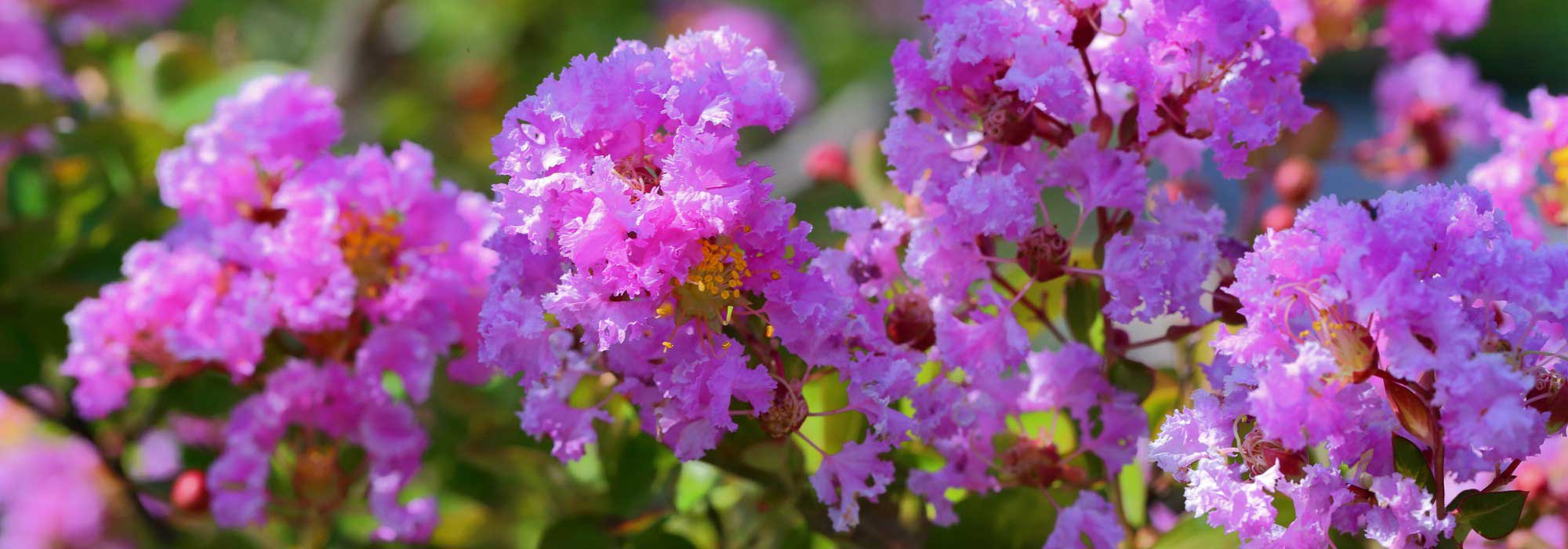
Growing Crape myrtle (Lagerstroemia) Successfully in Containers
All About Choosing, Planting and Caring for Crape Myrtle in Pots
Contents
Lagerstroemia, commonly known as Crape Myrtle or Summer Lilac, is a bush prized for its exuberant summer flowering, in panicles of small crinkled flowers in Indian pink, glowing red or white, and for its foliage with dazzling autumn colours. In winter, its bark is remarkable, satiny, with soft cinnamon hues, adorned with rosy and cream marbling. Thanks to its good hardiness (down to -15°C), it can be grown in most of our regions, although it prefers a warm and sunny position to fully showcase its flowering. The summer lilac naturally forms a beautiful bush 2 to 5 m tall, but there are also smaller-growing varieties, even dwarf ones, which are perfect in pots on the terrace or balcony.
Discover all our tips for growing this floriferous bush in pots, as well as our selection of Crape Myrtle for pot-growing
Which varieties of Lagerstroemia (Crepe Myrtle) can grow in pots?
Lagerstroemia are bushes with a bushy habit of moderate size, reaching a maximum height of 5m with a similar spread at ripeness. For container growing, opt for the most compact varieties: some measure no more than 60cm in height at ripeness. Among the smallest, we can mention:
- The Lagerstroemia indica ‘Berlingot Menthe’: a variety that does not exceed 1.5m, featuring lovely candy-pink flowering in midsummer.
- The crape myrtles from the ‘With Love’ ® series which includes very small models with abundant flowering, perfectly suited to small spaces and container growing. They come in various colours, from purple-mauve in ‘Eternal’, to pale pink in ‘Babe’, through to pure white (‘Virgin’) or deep pink (‘Kiss’). They will not exceed 60-70cm in height with a 30 to 40cm spread at ripeness.
- ‘Dwarf Red‘, ‘Mimie Fuchsia‘ and ‘Petite Canaille Mauve‘ will also make a striking impression in a large container on the terrace, with their compact size not exceeding 1m in height at ripeness.
→ Discover all our Crape Myrtles for containers
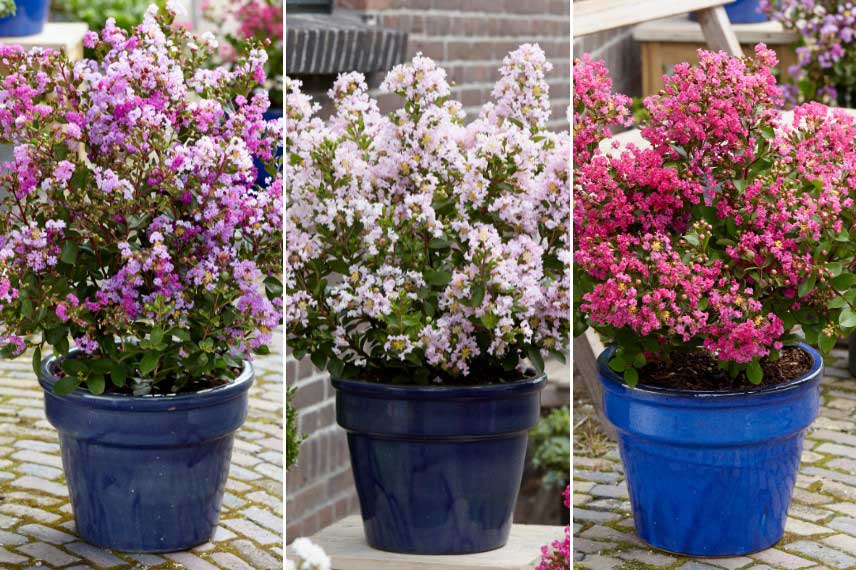
Lagerstroemias ‘Eternal’, ‘Babe’ and ‘Kiss’ are three compact varieties well-suited to container growing (photos © Plantipp)
When and where to plant a Crepe Myrtle in a pot?
We recommend planting the Lagerstroemia in spring, between April and May, when the risk of frost has passed. Spring planting will allow it to establish well before winter. In regions with a mild climate, autumn planting is also possible.
What is the best position for a Crape Myrtle?
The Lagerstroemia needs warmth and plenty of light to flower well. Place the pot on a sunny balcony or terrace, in a very warm and sheltered spot, protected from strong, cold winds. Your Lagerstroemia should receive at least 6 hours of direct sunlight per day.
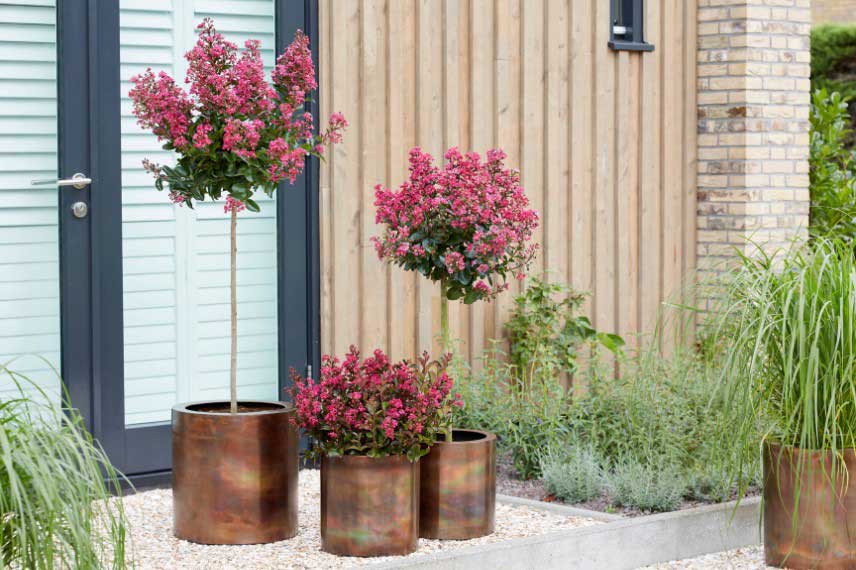
Lagerstroemias ‘Berry Dazzle’ in pots (photo © Plantipp)
Which type of pot to choose for your Crepe Myrtle?
Choose a pot 2 to 3 times larger than the root ball size, with a minimum diameter of 50 cm and depth of 60 cm, featuring good drainage holes to prevent water stagnation. A terracotta container is ideal, as it allows better root aeration and proper water drainage from the substrate. Ensure the pot is wide enough for its roots. You could also opt for a plastic pot, which is lighter, more manageable and economical, requiring less frequent watering.
Which soil for the Crepe Myrtle?
Lagerstroemia requires a well-drained substrate to prevent root rot. It thrives in sufficiently rich, non-calcareous soil that remains moist in summer. You can opt for abush compost mixed with some compost, or create a homemade homogeneous blend of garden soil, well-rotted compost, a bit of heather soil, and coarse sand. To ensure drainage, spread a layer of gravel or clay pebbles at the bottom of the pot.
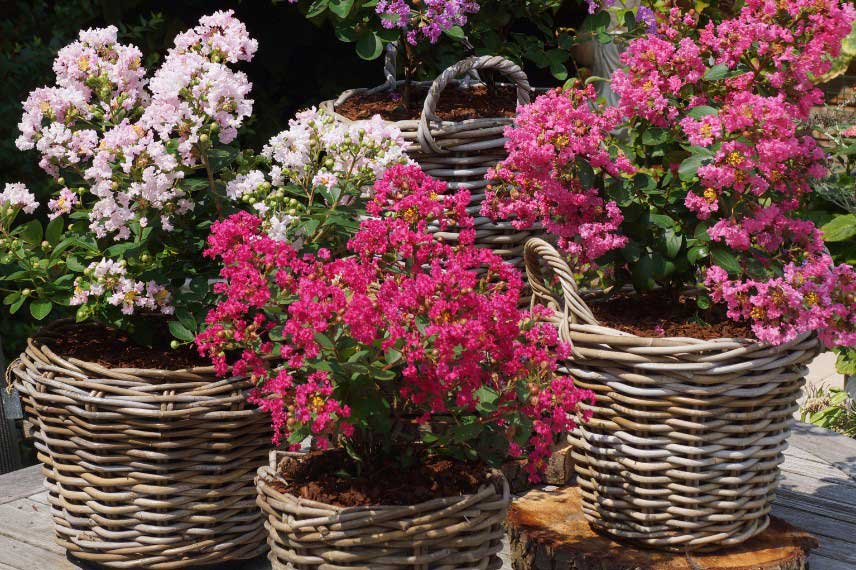
Several compact varieties of Lagerstroemias grown in pots (photo © Plantipp)
How to plant a Crepe Myrtle in a pot?
- Start by soaking the root ball in a bucket of water until no more air bubbles appear
- Place a layer of clay pebbles, pumice or gravel (about 20% of the pot’s volume) at the bottom of the pot to improve drainage.
- Fill with some of the growing medium until the pot is half full
- Position the bush in the centre of the pot, ensuring the top of the root ball sits 2 to 3 cm below the rim of the pot. The collar should not be buried.
- Fill in with the remaining mixture, then lightly firm down.
- Water generously.
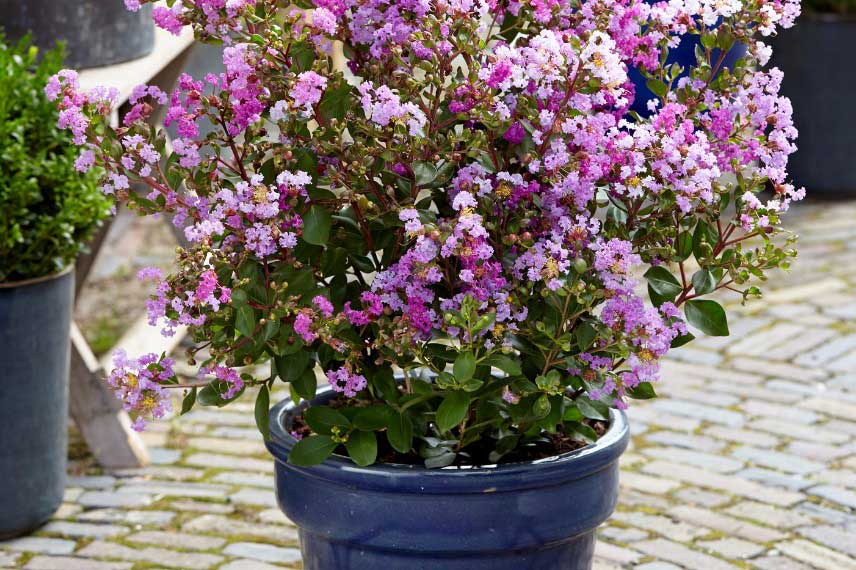
The stunning Lagerstroemia ‘Eternal’ grown in a pot (photo © Plantipp)
How to care for Lagerstroemia (Crepe Myrtle) in a pot?
Watering
Fertilisation
This bush will appreciate some liquid fertiliser applications during the growing season, in spring and summer. Annual additions of compost in spring or autumn will also be beneficial to encourage its growth and flowering.
Pruning
Pruning is not essential, but it helps maintain compact dimensions and supports branching. It also promotes abundant and generous flowering. The Lagerstroemia tolerates hard pruning well, and is even an ideal candidate for bonsai training. Prune in late winter, between late February and early March, before new leaves appear. Cut just above a node:
- Using pruning shears that have been cleaned beforehand, remove damaged, dead, misplaced, or crossing branches
- You can prune very short, leaving only 4 to 6 buds
- Keep the branches that grow outward from the bush
- Open up the centre of the branches by removing excess growth
- Remove suckers
- Also remember to remove faded flowers throughout the summer to stimulate flowering
Overwintering
Although hardy down to -15°C once mature, the Crape Myrtle will appreciate protection from the cold if you live in an area with frequent and severe frosts. The roots of pot-grown plants are more exposed to cold than those in the ground. In this case, it will be preferable to store it in a frost-free place (a bright garage or cool room) for the winter. If it stays outside during the cold season, in case of a severe frost forecast, you can spread a thick layer of organic mulch to keep its base warm. Protecting the pot with cardboard or bubble wrap will also help insulate its roots from the cold. Cover the aerial parts with winter fleece and place it in a sheltered spot, against a south-facing wall. Reduce watering (two waterings per month are sufficient) and stop fertilising. In spring, you can bring your pot back out, gradually acclimatising it to full sun.
Repotting
Your bush can be repotted into a larger pot every 2 to 3 years in late winter. This will allow you to refresh its substrate, as in pots the soil becomes depleted more quickly than in the ground. You can also simply do a top-dressing each year by adding fresh, nutrient-rich compost to the surface of the pot.
- Subscribe!
- Contents
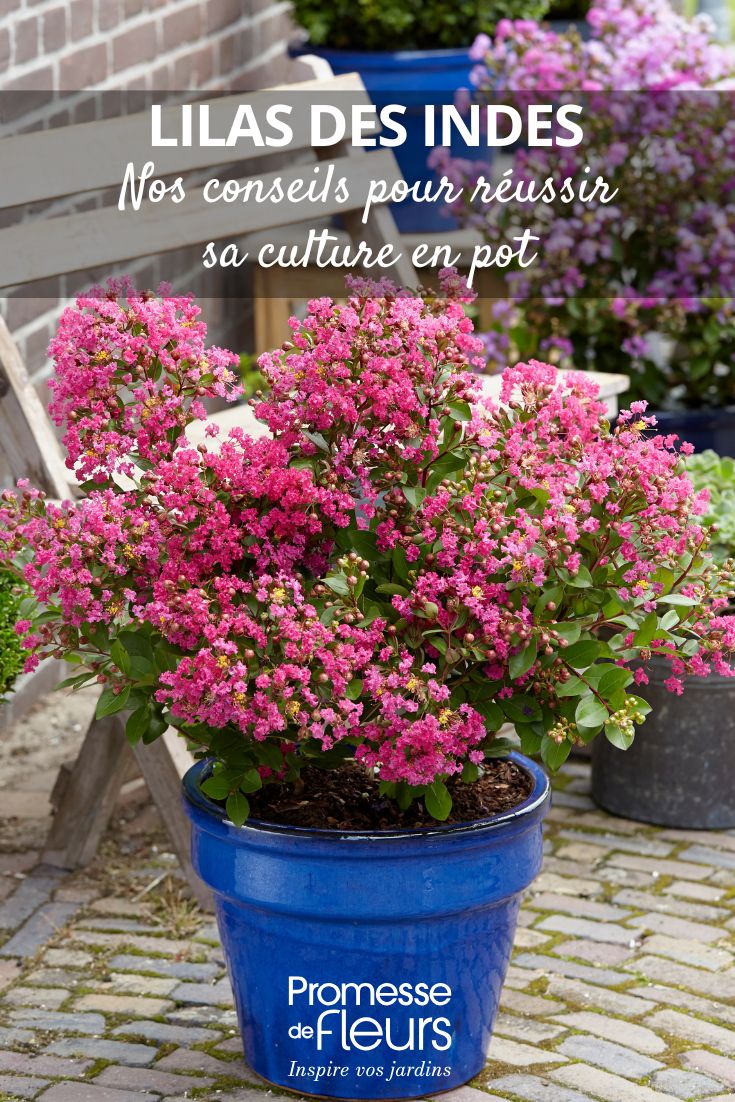































Comments